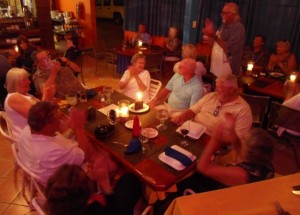
March 25, 2013 – We had yet another great dinner at Vagabundos Trailer Park Restaurant last evening, sadly likely the last as the lease for Peter & Joe is set to expire at the former RV Park. With some luck and planning we hope they are open in another location when we return with our next group this November. The group really enjoyed their meals trying many different items from the menu. The restaurant was really busy, at one point I counted over 50 patrons! We also celebrated Will’s birthday, chocolate cake and tequila, yes Cabo style! I would be remiss to say we were able to celebrated Paul’s birthday earlier on tour, birthdays are great when you examine the alternative eh?
After Loreto we stopped at Palapa 206 in Ciudad Constitucion, an industrial agricultural area. Unfortunately both of Nigel’s race cars were out of commission however the gang did have a chance to meet both Nigel & Mike, some even met Paclo. Bertha was busy with school work and our Mike was able to tag along for a short trip into town with Mike, I venture to say he will not soon forget this ride!
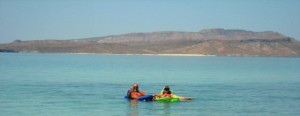
Our stay at Tecolote was busy and hot with windy nights from off the desert followed by calm days, many were able to get into the water, swimming, floating, SUP boarding and Kayaking. When we arrived Rob and Anne Marie, retired teachers from Frank Hurt, were back on the beach, they had spent the winter in La Ventana and were flying out on Saturday, storing their RV in La Paz. Our vendor friend Benny was around and sold a few items, we all bought some delicious cream filled donuts, some were able to help dig out a couple locals stuck in the sand as we were immersed in some pre-Easter cultural festivities. Jan found out what it was like to get whacked by a stingray, yes a bit painful. However applying some really hot water, a tourniquet and an antihistamine did the trick and she was painless in no time. Our time at Tecolote closed with a planned potluck, great food, great folks and lots of fun, everyone will remember fondly their experience on Playa Tecolote.
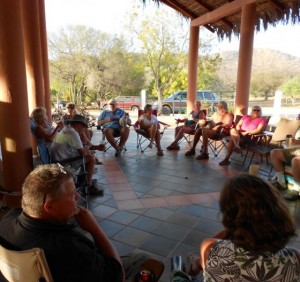
Off we went to Rancho Verde but first our walking tour of El Triunfo and brunch at the El Triunfo Cafe. No surprise this was a big hit, with purchases made at Karin’s Art Gallery and other local shops in town. Mark and his staff were ready for us at the cafe, the gang really loved his food, particularly the omelettes, I must say they are fabuloso! We arrived in Rancho Verde under sunny skies and it was hot. After setting up I went for a shower and turned up the cold water to cool down. Our birders, Linda and Will, were thrilled to see so many varieties of birds and Mike and Susan walked up to see a friend’s house up the slope on the leased properties. We were very happy to see our friends Bill and Marilyn from the beach at Tecolote, getting ready to head home and Del and Donna who reside at Rancho Verde in the winter. Our day ended with a Happy Hour in the common palapa as the day cooled off nicely and evening approached. It was 35C or 95F during the day and cooled off to 45F or 10C overnight.
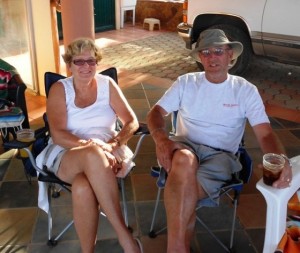
Following a quiet night and great sleep we headed off to Los Cabos our final southerly destination. It was early Sunday with an 8am departure and a not too busy drive. Lots of local were at Mass, given we were one week out from Easter Sunday. We made our first body break at the Tropic of Cancer. The new facility and monument is now finished with washrooms open, I was happy to see the old monument has now been given a prominent and dignified spot out back and part of the whole exhibit, actually a nice touch, congrats to the Mexican designers for including this piece of history. The Caligas propane was closed so we were into Los Cabos sooner than usual, our stop at the Cabo Plaza was fruitful with the ATMs buzzing, supplies purchased at both Walmart and La Europea. Then off to the Villa Serena RV Park. In the afternoon we headed off to the Glass Blown Factory, a busy place with 2 cruise ships in, then the harbour entrance also very busy with local beach goers and lastly our stop at the scenic overlook provided by the Mona Lisa Restaurant patios.
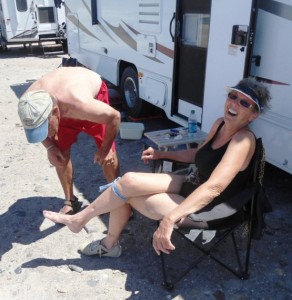
This morning we head off to Artesano’s then a tour of San Jose and the old town and Art District. Just another busy day with fun and new adventure for all our new Baja Amigos.
Did you know?
A common site this time of year in the southern Sea of Cortez is the Blue Whale. They are immense animals and their scientific name, Balaenoptera musculus, is a name that is certainly suggestive of their size and strength. They can reach more than one hundred feet (33 meters) in length and weigh 180 tons (190,000 kg), in fact they are the largest of all animals found in the Southern Hemisphere. Blue whales have arteries so large that a small child could crawl through them. At birth they are 22 feet long (7.5 meters) and weigh 3.5 tons (3,500 kg). The blue whale calf gains about 200 pounds (90 kg) a day on its mother’s fat and protein-rich milk, and will weigh 16.5 tons (17,000 kg) when it is weaned 7 or 8 months later.
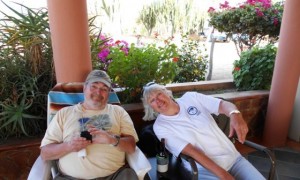
As you may know whales are air breathing, fully aquatic mammals. Blue whales have a double blowhole, as do all baleen whales, while toothed whales have a single blowhole. Having a nose on top of the head is an ideal adaptation for marine animals, but it is one that took millions of years to evolve. All cetaceans also have a torpedo-like body shape, their front limbs modified to pectoral flippers (an elongated paddle-shape in the blue whale). They do not have any visible hind limbs; and, most species have a dorsal fin. The tail flukes of whales and dolphins are horizontal, unlike the tails of fish, such as sharks, which are vertical. Cetaceans do not have external ears or ear muscles and they do not have scales or gills. All mammals have hair, but in whales it is often hard to see. Although whales lack a covering of fur, however many baleen whales have sensitive hairs on their rostrums or snouts, and embryonic cetaceans show a covering of hair that disappears as the fetus develops. Cetaceans do not have sweat or sebaceous glands; instead, they have a thick layer of blubber, fat and oil beneath their skin that is used for insulation, heat regulation and energy storage.
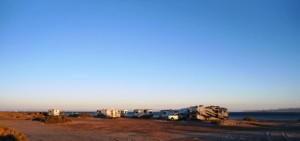
It is difficult to mistake a blue whale for anything else when seen from a boat. At the surface, the animal is slate or slightly grayish blue, with a mottling pattern on its back. In the moments before it surfaces, sending its blow 25 feet (8 meters) into the air – the tallest blow of any whale – it turns the water aquamarine. Blue whales will often dive for 10-20 minutes at a time, although longer dives are certainly known. They will usually follow dives of that length with 8-15 blows at the surface. When blue whales fluke, the tail stock is dramatically thick and visibly powerful. As with other whales, blues will often repeat the surface, dive, and respiration patterns they establish. Under normal circumstances they swim at speeds of about 22 km/hr (13.5 mph), but can sustain speeds of 48 km/hr (30 mph) if frightened or chased. This is truly remarkable considering that we usually equate size with sloth rather than speed.
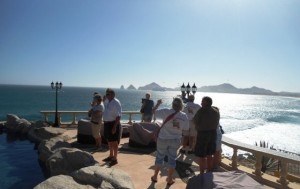
Blue whales are in the same family and genus as minke, Bryde’s (pronounced Broo-dus), sei and fin whales. They are collectively known as rorquals. Rorqual is a Norwegian term that means “furrow whale” and refers to the numerous throat grooves that identify whales in this family. It is these grooves that allow the rorqual to expand its throat and take in more food and water as it feeds, typically on krill or small fish. Humpback whales have 10-36 throat grooves, while the blue whale may have as many as ninety-four. It was the size of rorquals like the blue and fin whales that attracted commercial whalers. These large mammals are known for their rapid swimming speed, and this ability protected them from whaling until the advent of steamships.
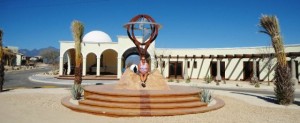
In the single season of 1930-31, 29,410 blue whales were killed in Antarctic waters. This unsustainable take fell dramatically in subsequent years, with 12,559 taken in 1939-40, and 6,313 in 1949-50. In total, 328,177 blue whales were killed in the Antarctic between 1909 to 1965. In the early 1960s, the International Whaling Commission began various measures to protect the whales, but non- compliance from a number of whaling nations effectively negated that protection. It was only in 1966, when the animal was believed to be commercially and possibly even biologically extinct, that a complete cessation of whaling was implemented.
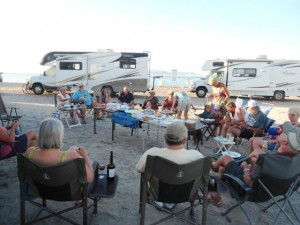
Blue whales have been elusive animals to study. The pre-whaling population of 220,000 to 240,000 individuals has been reduced to probably less than 12,500 and recovery is proceeding at a painfully slow rate. Truthfully, no one knows how many blue whales are left as they are difficult and expensive to count, and those species for which we have sound population data tend to be coastal for at least part of the year. Before commercial whaling, the majority of blue whales, perhaps as many as 90 percent, lived in the Southern Hemisphere. Today the healthiest population of blues is in the North Pacific (which includes the Baja population). Some estimates put this population as high as 2,500. Blue whales spend the winter in temperate and tropical waters, probably mating and giving birth to their young during that time. Female blue whales give birth to a single calf every 2-3 years, after carrying that calf for 10-12 months. There have been records of twins from the decks of whaling vessels, but it is very unlikely that a blue whale could bring two fetuses successfully to term. Although groups of blue whales may be seen together, researchers do not know how permanent, if at all, these groupings are. The core of blue whale “society” is the cow and calf. All other groups of blue whales are believed to simply reflect animals coming together using the same, localized resource.
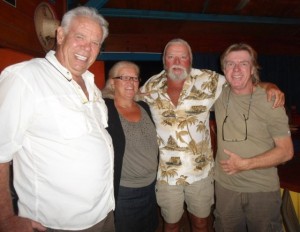
Maybe it is their size, our perception of their gentleness, their interaction with others of their own kind, or the tales founded in myth, legend and reality of their interaction with humans that attracts us. Or maybe it is the knowledge that we came so close to losing them. No matter what the reason, there are few people who are not awed at the sight of a great whale ascending from the depths. We do not know how many whales are left, but as development continues along our coasts, it is becoming even more important that we take the time to study the whales and learn their secrets. If we do not, we may soon find the oceans silent, and the surface stilled. The world’s oceans were once filled with blue whales, today the sight of a whale blowing on the horizon is sadly rare, except perhaps in the beautiful waters that surround the Baja Peninsula – a sight to be cherished.

